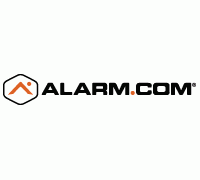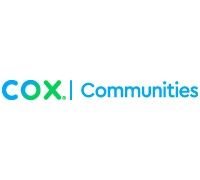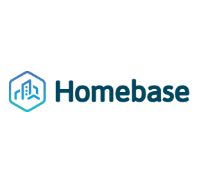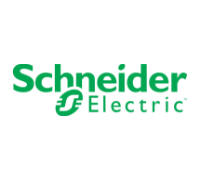Ihiji: The support burden of the IoT is quickly growing past the skills of the typical homeowner
 Stuart Rench, CEO of Ihiji, provides insight on several key industry trends for the 2016 CONNECTIONS Summit at CES, which took place January 6-7, 2016 in Las Vegas:
Stuart Rench, CEO of Ihiji, provides insight on several key industry trends for the 2016 CONNECTIONS Summit at CES, which took place January 6-7, 2016 in Las Vegas:
What is the most important next step to engage consumers in smart home solutions, connected entertainment services, and/or value-added services like tech support and connected health?
The first step in helping consumers to engage with this technology is to educate them on the need to invest in a next generation network as the backbone to any “connected” device or service. What many consumers do not understand is that the robustness of whatever “smart” gear they install including their computing, mobile devices, audio-visual or automation relies heavily on this network. Since before 2009, we have seen home theater gear become IP-enabled, letting it attach to residential networks for both streaming entertainment and for device status updates. This does not necessarily mean that the consumer is actively engaging, but as far as we are concerned, having any devices which connect to the home’s network identifies these consumers as potential smarthome, connected entertainment and home health consumers. Once a strong network has been designed and installed, the experience of any smart device related to the home or personal health will be greatly improved. Although some people will build their “smarthome” from scratch, we believe it will be more likely that most smarthomes will grow organically, starting with an AV component or home thermostat and expanding from there. Technology integrators will have to develop professional services to assist the segment of consumers below the top five percent of the market. The complexity of these environments will only increase, as IoT devices continue to flood the market. It is likely to get a lot more difficult for DYI consumer to make it all work together on their own before industry standards are established open communications are common practice.
What is the biggest challenge your company faces in 2016?
We expect 2016 will represent an explosion in the volume and usage of “smart” products under the IoT or smart home category. We currently work directly with many of the technology professionals who service this smarthome market. Our biggest challenge in the coming year will be to make certain that they are equipped to serve the needs of their their growing smarthome clients . We have recently launched a new product and continue to innovate the remote network tools we have been selling since 2009, but the addition of new IP enabled devices is mind boggling. This will represent a lot of unforeseen technological complexity. In order to drive any significant adoption, it will be very important that communications between all of these devices be open. In our experience developing remote technology support tools for integrators, we have seen a lack of open protocols which is complicating support, and ultimately could stifle widescale adoption of this new technology. This has led us to develop our own standard, which companies including Sony have now adopted and use as well.
What is the biggest driver for the connected consumer market?
To-date, the early-adopter wave of connected consumers has been driven by the high-end custom integrators. For these regional service providers, these are typically projects where budget, ease of setup and cost of support are not the first considerations. Very much different from the consumer DYI market. In the past 10 years, integrators have been installing, configuring and supporting higher end TVs, receivers, speakers and other entertainment-oriented devices which began adding network connectivity to allow for streaming content and remote technical support. Prior to that it was only the PC and printer which had connectivity to the network. Introducing these new connected devices immediately began to add complexity as these manufacturers worked through the bugs in this new functionality. It also put a much bigger tax on the bandwidth requirements in the home, typically requiring that a new and expensive network be installed. When budget is not the main concern, these kinds of issues can be handled by the service provider. However, in order for a mass market of connected consumers to become a reality, manufacturers will need to develop products that mass market consumer can successfully setup on their own, with open communications and reliable protocol adoption across devices.
The current massive flood of new connected devices are likely to complicate the problem before making it all easier. What began as a couple of specialty products on an endcap are now rapidly creeping down entire aisles at electronics and home DYI chains. This traditional retail push marketing strategy is placing lighting, door locks, automation, security, video surveillance and temperature control products in front of consumers from a convergence of disparate manufacturers. A number of these non-technology based companies are developing technology or partnering with traditional computer peripheral and networking companies to created their connected devices. This land grab of shelf space is resulting in consumer confusion on how to make it all work together and keep it all online. We are starting to see how home networks, once reserved for the home pc, printer and for surfing the web, are fast becoming the technology “backbone” of a modern home’s entertainment, security and operations. As new technology continues to make it easier for home consumers to tackle their own Smarthome creation and manufacturers begin to agree on using common communications and protocols, we will start to see a wider base of connected consumers.
Describe your vision for the smart home and entertainment markets in 2020.
We predict an evolving need for the CE industry to fulfill an entirely new monthly service to remotely manage a family’s technology experience in the home. From personal mobile devices and PCs, to AV, automation, security and all of the other IoT devices which will be connected in the next 5 years, the support burden to keep it all humming will quickly grow past the skills of the typical homeowner. As cheap, unstable connected devices inundate home networks, the uptime of all of the devices and the network itself will be challenged. Diagnosing and resolving these issues across what will potentially be hundreds of devices will have to be facilitated by a technology professional.
Every week we help new integrators around the world to set up their own Service Operations Center (SOC) so they may deliver remote technology support services like these to their consumer clientele. Utilizing tools from Ihiji, service provider technicians will be notified if any devices go offline or experience performance issues. Securely and remotely accessing the device status and services data, technicians can troubleshoot and resolve most problems without a need to visit the customer’s home. We are already seeing this kind of recurring revenue service being delivered to our dealers’ high-end clients.
Stuart Rench spoke on the panel session "Support Solutions: IoT and the Connected Home" on January 7 at 11:00am. Other speakers included CSS Corp, F-Secure, Radialpoint, Sutherland Global Services, and Support.com.
For more information on the speakers and sessions included at this year's CONNECTIONS Summit, visit www.connectionssummit.com.
Next: Technology is most successful when it doesn't feel like technology at all: Insights from Lumo BodyTech
Previous: The Top IoT Market Disruptors for 2016




 Stuart Rench, CEO of Ihiji, provides insight on several key industry trends for the
Stuart Rench, CEO of Ihiji, provides insight on several key industry trends for the 










